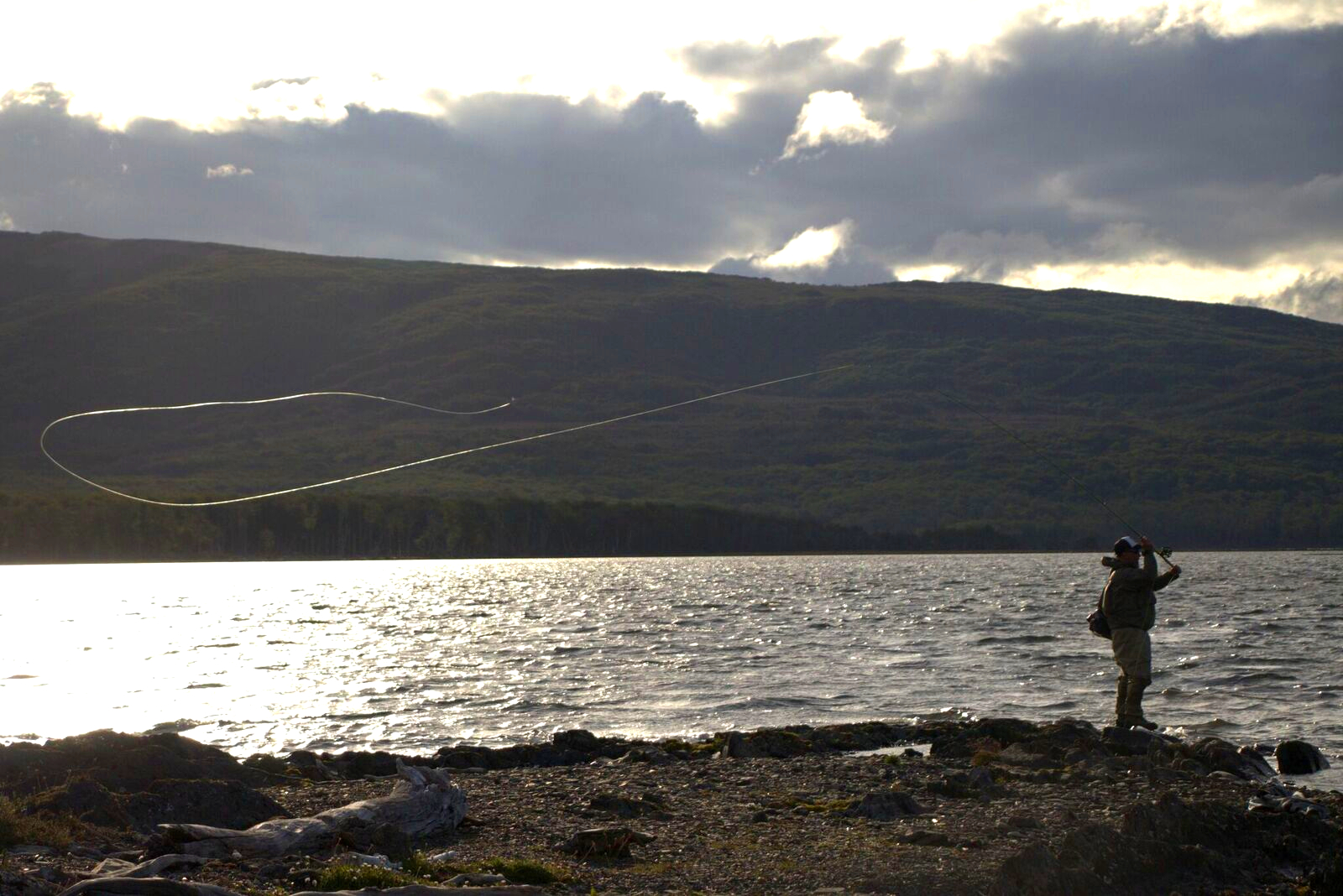Surf Fishing with Two Hand Rods
Surf fishing is nothing new. As long as there have been fish in the sea, people have been trying to catch them.
Many species can be effectively targeted from shore without need for a boat. Stripers, bluefish, corbina, roosters, snook, and even salmon come to find. Regardless of what zip code you find yourself in, there’s likely a game fish that will eat a fly cast into into the surf. Catching many of these fish requires casting into onshore winds or a stiff crossbreeze that requires high line speed to get the fly out to where the fish are. While a single hand fly rod can achieve this for some folks, a two hand rod allows more anglers to achieve greater casting distance and find those cruising cows.
Surf Rods
Two hand rods designed for surf fishing (‘surf rods’) are inherently different from spey rods. Their actions are more akin to single hand rods, where the top 1-2 sections of the rod load quickly (providing the action) and the bottom half provides fish-sticking power. Spey rods typically load deeper, flexing through three sections or better. Because surf rods are designed to be cast overhead and not with a spey cast, their line designations are the same as single hand rods – no conversion needed to figure out what size of rod is appropriate for the conditions you’ll be facing. While you can ‘cheat’ and use a spey rod for surf casting, they don’t cast nearly as well overhead as a dedicated surf rod. If you choose to go this route, find the grain window for your spey rod and step back by roughly 60 grains from the bottom end of the window. It’s important to remember that spey line size designations are different from single hand rods; a #6 spey is roughly equivalent in fishing handling/casting ability to a #8 single hander.
Surf rods allow the angler to use both arms to transfer power into the cast, affording more time on the water without fatigue and offering an alternative to anglers with shoulder problems. Once you’ve dialed in your two hand overhead cast, the amount of line speed able to be generated is enormous – no double-haul needed. Several rod manufacturers have released surf rods in past few years. ECHO and Beulah produce offerings in a variety of line weights and lengths for any surf fishing situation, and G.Loomis still has some of their surf rods hiding in shops around the country.
ECHO Boost Beach Rod
Beulah Opal Two Hander Rod
Surf Lines
Line manufacturers have followed suit with short headed lines that act as shooting heads for delivering flies into onshore winds. Most any integrated single hand line designed for turning over larger bugs will work, but the shorter heads and specialized colorways found on dedicated surf lines make a difference when it comes to bringing fish to hand. As with all lines, longer heads provide greater casting distance when winds are down, but are harder to aerialize and control when it starts to blow. For most anglers, a shorter head and aggressive taper will work best in surf casting situations.
Airflo Beach Line
Rio Coastal Quickshooter Line
Some anglers shy away from learning new casts, even if it could help them land more fish. Don’t be one of those people. The learning curve can be intimidating, but as with most things involved in fly fishing, it isn’t as difficult as people make it seem. Grab a surf rod, a stiff cup of coffee and hit the beach tomorrow morning – I’ll see you there.



